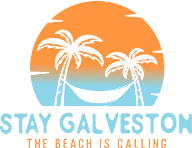The
Seawall
The seawall in Galveston, Texas, is more than 10 miles long and 17 feet high, making it the longest continuous sidewalk in the country as well as the world’s longest mural. But things weren’t always like this on the historic Seawall Boulevard, which is now a popular destination for beachgoers and provides a stunning backdrop for a wide variety of shops, restaurants, and attractions as well as stores where visitors can rent equipment. After the devastating Great Storm of 1900, the resilient community of Galveston spent years working to raise the island and build the protective seawall that is still in place today. Now, athletes such as runners, cyclists, skaters, and surrey riders adorn the seawall in an effort to entice visitors to join in on the fun.
History
The seawall and Seawall Boulevard have been the defining features of Galveston’s beachfront since the early 20th century.
Galveston’s beaches and the Gulf of Mexico attract a large number of visitors every time the city hosts a tourist season.
They arrive almost exclusively in automobiles, which poses an ongoing challenge for the authorities to maintain an orderly flow of traffic without putting pedestrians in danger.
On September 8, 1900, a devastating hurricane and tidal wave wiped out 6,000 people and destroyed a large portion of the city of Galveston. After the tragedy, the city decided to appoint a board of three engineers to come up with a plan to protect itself from future storms. The board included Brig. Gen. (Ret.) Henry M. Robert (1837-1923), the author of “Robert’s Rules of Order,” Alfred Noble, and H. C. Ripley. 1902 was the year that work began on their proposition, which was going to be jointly financed by the governments of the city, county, and state. Buildings were raised and the surface of the entire city was improved to raise the elevation to a maximum of 12 feet above the level of the sea. This was done to reduce the risk of damage from flooding. Along the Gulf coast of the island, a solid concrete wall was constructed to act as a barrier against the island’s frequently occurring high waves.
In earlier decades, city commissioners implemented a variety of strategies that garnered both local support and opposition in order to keep traffic moving smoothly on the boulevard. These strategies included:
Even before it was dedicated, the boulevard was dominated by a large number of automobiles. The Seawall Boulevard was formally opened to the public on September 9th, 1911.
A procession of automobiles, the majority of which belonged to and were driven by residents of Galveston, was led by a vehicle in which former Governor Oscar Colquitt was seated.
After reaching 39th Street, the parade turned around and proceeded to its final destination, a grandstand that had been set up at 22nd Street behind the seawall. The keynote address was given by Governor Colquitt, who discussed recent achievements achieved by the city, such as the raising of the seawall grade and the construction of the boulevard. The procession of automobiles served as a warning that there would be significant congestion.
The tidal surge caused by the 1900 Storm inundated Galveston, causing the deaths of thousands of people and the destruction and damage of millions of dollars. What measures should be taken to protect the city from hurricanes in the future?
The construction of the seawall was the initial step in this process. An act allowing for the construction of a seawall in Galveston was approved by the Texas State Legislature on September 7, 1901. A group of three engineers, led by Brigadier General Henry Martyn Robert, Alfred Noble, and H. C. Ripley, formed a board with the purpose of drafting plans for the future protection of Galveston. These plans included the construction of a seawall as well as the raising of the city’s elevation. The Board of Commissioners issued its report in January 1902, in which it recommended the construction of a seawall that would stretch from the south jetty near 8th street to Avenue D and 6th Street, and then continue westward along the Gulf of Mexico to 39th Street. On February 5, 1902, the Commissioners Court of Galveston County adopted a resolution that the county would underwrite its construction by issuing bonds. The resolution stated that the county would pay for the construction. The construction contract was signed by J. M. O’Rourke and George Steinmetz on September 19, 1902, and it stipulated that the work was to be completed within fifteen months from the date of signing. On July 29, 1904, the first section of the Seawall was finished being constructed.
This section was constructed out of concrete and measured 3.3 miles in length, 16 feet in width at its base, 5 feet in width at its peak, and 17 feet in height. The seawall’s exterior was designed with a curved face that directed waves upward. Riprap was positioned along the base with its exposed side facing the Gulf of Mexico in order to reduce the impact of wave action. The first segment was finished at a cost of almost $1.6 million, which was the total expenditure. Its usefulness was first demonstrated during the hurricane that struck on September 21, 1909. It was put to the ultimate test by the hurricane that occurred on August 16th, 1915. The seawall had a significant impact, reducing both the number of lives lost and the amount of property destroyed.
In order to strengthen Fort Crockett’s defenses, a second section was constructed between December 1904 and October 1905. It was given funding by the Congressional committees. This section extended from the 39th to the 53rd streets and was 4,935 feet long. In 1927, the Seawall was extended westward to 61st Street, and again in 1963, it was extended westward to 99th Street

